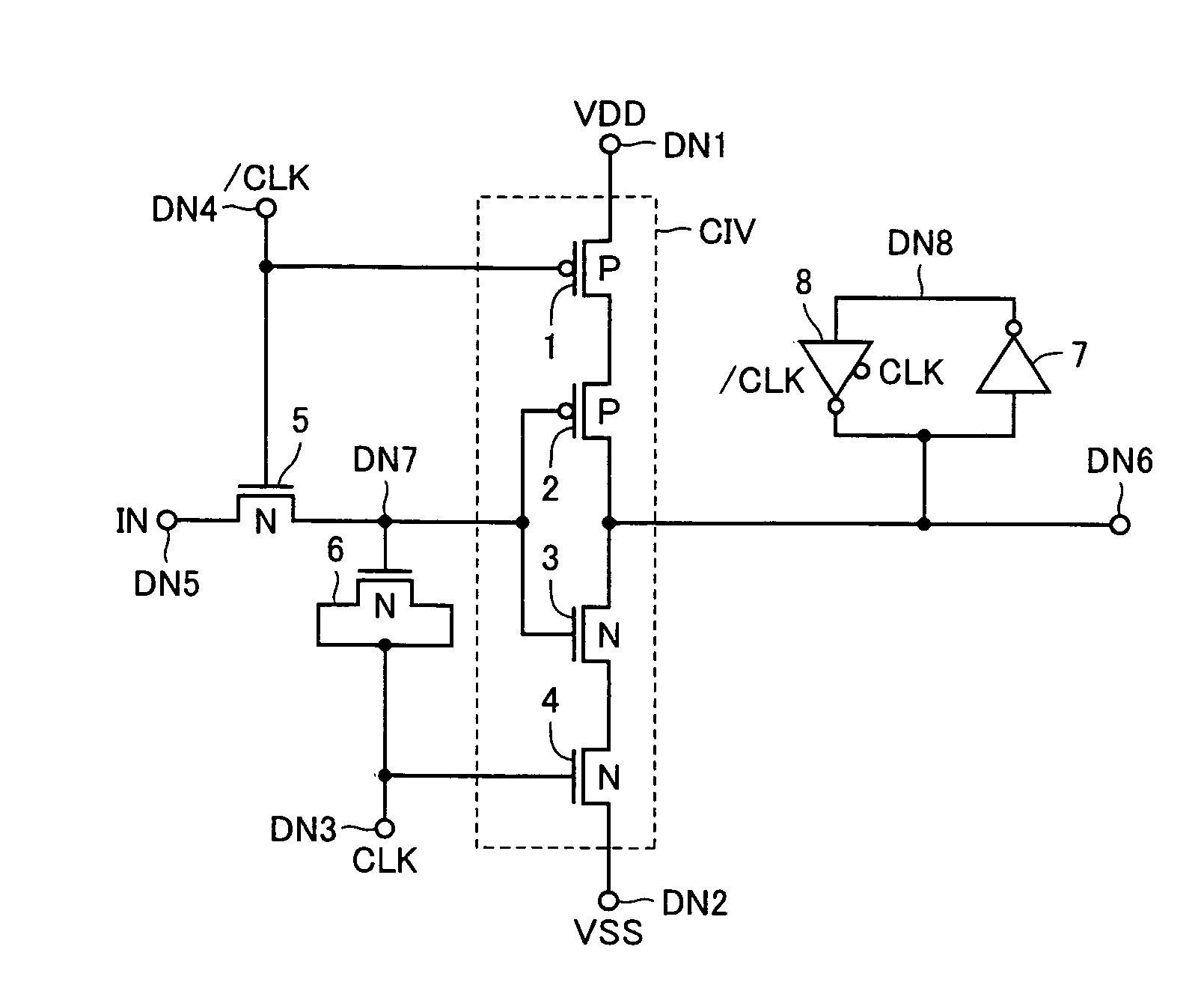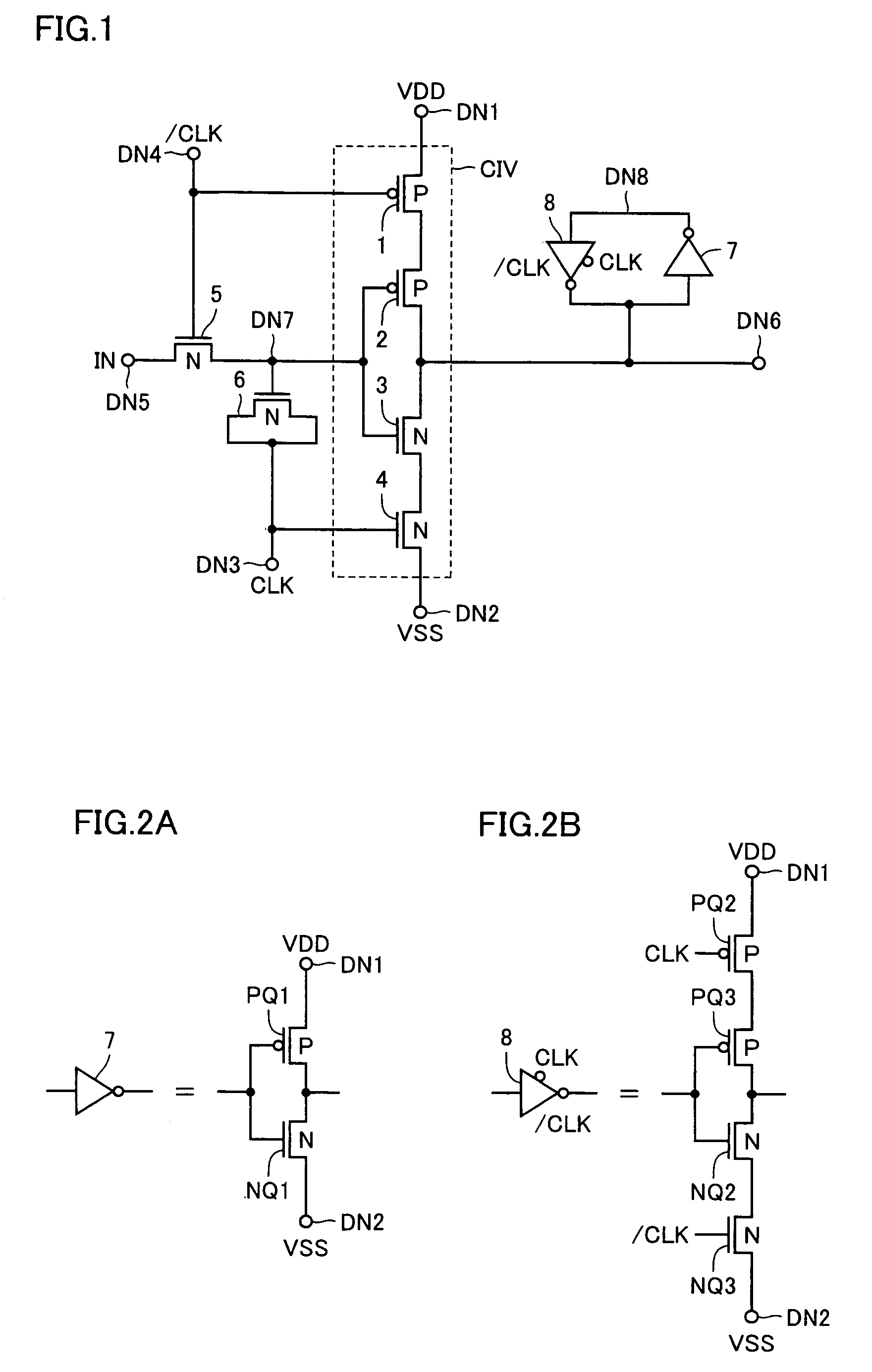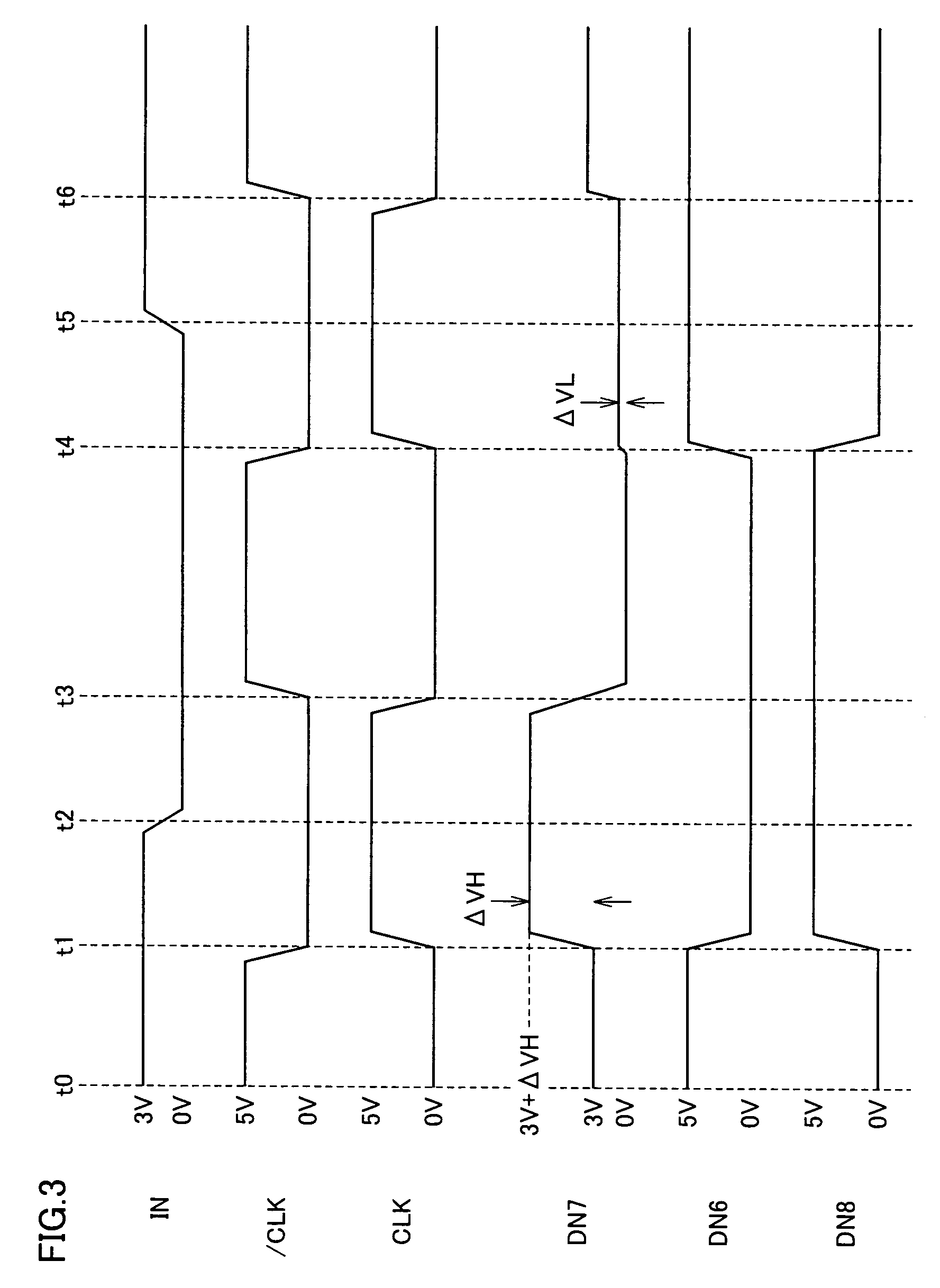Level conversion circuit and serial/parallel conversion circuit with level conversion function
a level conversion circuit and level conversion function technology, applied in logic circuit coupling/interface arrangement, pulse technique, instruments, etc., can solve the problems of insufficient high-speed operation, inferior crystal quality of low-temperature polysilicon tft, and inability to reduce the occupied area, etc., to achieve low power consumption and high speed
- Summary
- Abstract
- Description
- Claims
- Application Information
AI Technical Summary
Benefits of technology
Problems solved by technology
Method used
Image
Examples
first embodiment
[0069
[0070]FIG. 1 shows a configuration of a level conversion circuit according to a first embodiment of the present invention. Referring to FIG. 1, the level conversion circuit includes an N-channel MOS transistor (insulated gate field effect transistor) 5 transmitting an input signal IN applied to an input node DN5 to an internal node DN7 according to a clock signal / CLK applied to an input node DN4, a MOS-type capacitance element (hereinafter referred to as MOS capacitor) 6 coupled to internal node DN7 and selectively forming a capacitor according to a clock signal CLK from a clock input node DN3, a clocked inverter CIV selectively activated according to clock signals CLK and / CLK and driving, when activated, an internal output node DN6 according to the signal on internal node DN7, and an inverter 7 and a clocked inverter 8 that constitute a latch circuit latching a signal voltage on internal output node DN6.
[0071]When this level conversion circuit is used in a display device (di...
second embodiment
[0096
[0097]FIG. 4 shows a configuration of a level conversion circuit according to a second embodiment of the present invention. The configuration of the level conversion circuit shown in FIG. 4 differs from that of the level conversion circuit shown in FIG. 1 in that, to low-side power supply node DN2 of clocked inverter CIV, clock signal / CLK is applied instead of the measurement reference voltage (ground voltage VSS). Other configuration of the level conversion circuit shown in FIG. 4 is identical to that of the level conversion circuit shown in FIG. 1. Therefore, like components are denoted by like reference numerals and the detailed description thereof is not repeated.
[0098]In the level conversion circuit shown in FIG. 4, clock signal CLK changes with a delay to clock signal / CLK.
[0099]FIG. 5 is a signal waveform diagram representing an operation of the level conversion circuit shown in FIG. 4 in the case where the clock skew large. As shown in FIG. 5, it is assumed now that in...
third embodiment
[0117
[0118]FIG. 8 shows a configuration of a level conversion circuit according to a third embodiment of the present invention. The configuration of the level conversion circuit shown in FIG. 8 differs from that of the level conversion circuit shown in FIG. 1 or 4 in that, the gate of P-channel MOS transistor 1 of clocked inverter CIV that is connected to high-side power supply node DN1 is connected to internal node DN7 and clock signal / CLK is applied to the gate of P-channel MOS transistor 2 connected to internal output node DN6. Similarly, clock signal CLK is applied to the gate of N-channel MOS transistor 3 and the gate of N-channel MOS transistor 4 connected to low-side power supply node DN2 is connected to internal node DN7. Further, to low-side power-supply node DN2, reference voltage VSS or clock signal / CLK is applied. Other configuration of the level conversion circuit shown in FIG. 8 is identical to the level conversion circuit shown in FIG. 1 or 4. Therefore, like compon...
PUM
 Login to View More
Login to View More Abstract
Description
Claims
Application Information
 Login to View More
Login to View More - R&D
- Intellectual Property
- Life Sciences
- Materials
- Tech Scout
- Unparalleled Data Quality
- Higher Quality Content
- 60% Fewer Hallucinations
Browse by: Latest US Patents, China's latest patents, Technical Efficacy Thesaurus, Application Domain, Technology Topic, Popular Technical Reports.
© 2025 PatSnap. All rights reserved.Legal|Privacy policy|Modern Slavery Act Transparency Statement|Sitemap|About US| Contact US: help@patsnap.com



